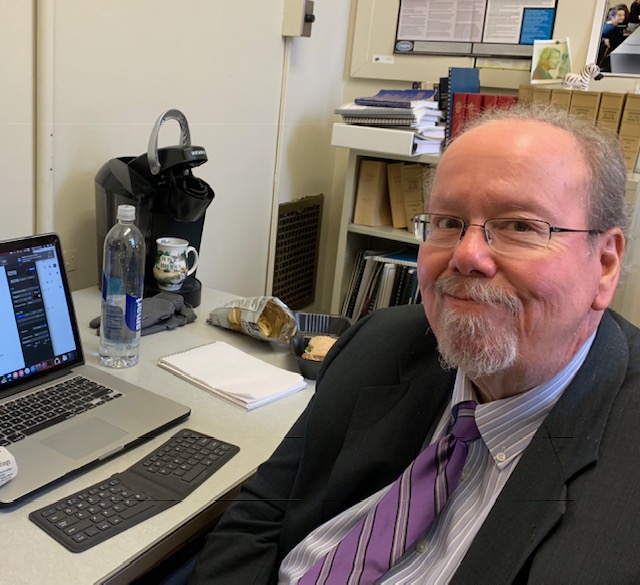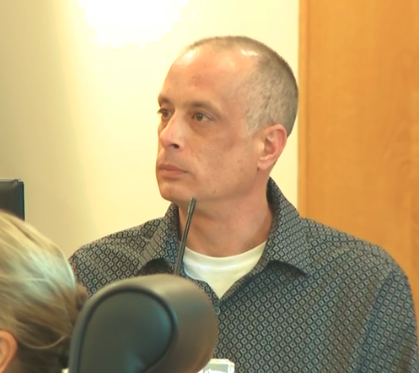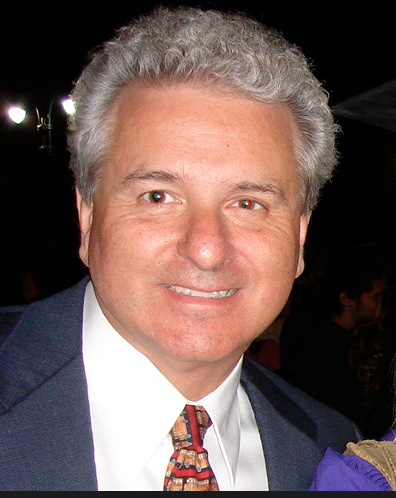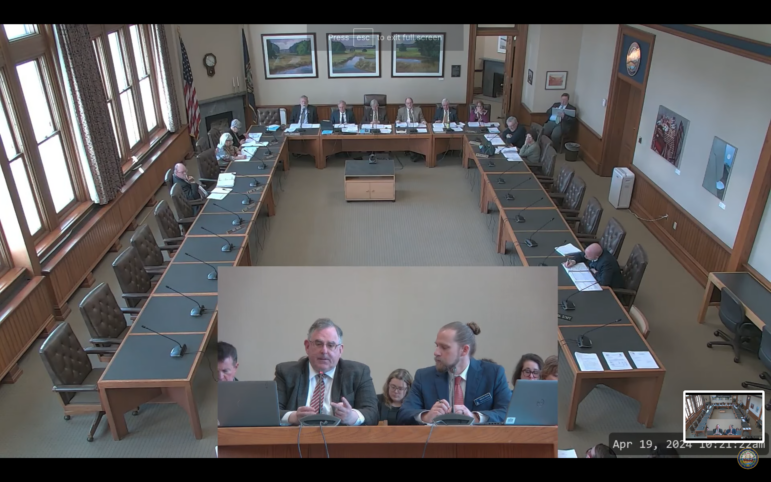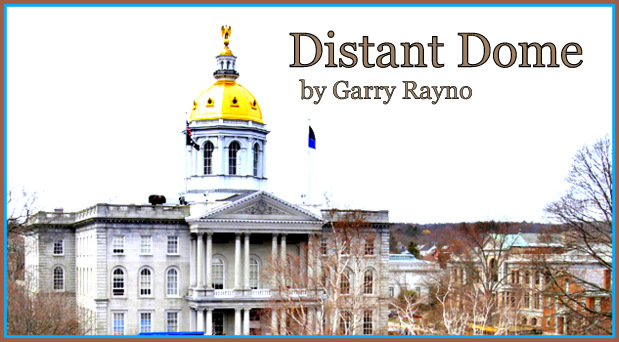
By GARRY RAYNO, InDepthNH.org
CONCORD – Last week the Secretary of State’s office released the figures for the number of registered voters in New Hampshire, and Democrats now outnumber Republicans for the first time in a decade.
But before Democrats begin celebrating, the number of undeclared voters is higher still, as it has been for some time.
Undeclared voters are the largest group and have been for a couple of decades.
According to the figures from Bill Gardner’s office, there are 1.018 million registered voters in New Hampshire as of Feb. 11, up about 10,000 from the 2018 election.
Undeclared voters account for 387,648 of the approximately 1.02 million, while Democrats number 324,593 and Republicans 306,542.
After the 2018 election, there were 1.01 million registered, 416,316 undeclared, 307,360 Republicans and 284,174 Democrats and 1,154 Libertarians, who have disappeared from the 2020 statistics.
Although the registered Republicans outnumber Democrats by about 23,000 voters, Democrats won majorities in the state House, Senate and Executive Council, which reinforces the old adage in New Hampshire that independents decide elections.
The partisan breakdown two years ago, is very similar to 2016, another presidential election year, with 988,228 registered voters, 403,816 undeclared, 305,368 Republicans and 279,044 Democrats.
Looking over the three elections, undeclared voters have gone from 403,816 to 416,316 to 387,648. That says undeclared voters tend to be more involved in presidential election years, which is the conventional wisdom.
But the drop off between 2018 and 2020 is very significant, at 28,668. Undeclared voters tend to go where the action is in primaries and obviously the action for the presidential primary was in the Democratic party this year with a large field to choose from and only token resistance to President Trump in the Republican primary.
Trump’s campaign has also been encouraging undeclared supporters to take a Democratic ballot and vote for Bernie Sanders, which is referred to as ratf***ing in political circles.
Tracking the Republican partisans over the three elections shows essentially a flat line going from 305,368 to 307,360 to 306,542.
And Democrats show an upward trend over the three elections growing from 279,044 to 284,174 to 324,593. That is a 16 percent increase over the last three elections.
Of course, Democratic Party Chair Raymond Buckley is touting the numbers and using the growth to fundraise to add to the party’s coffers for the general election.
While it is hard to find huge holes in the numbers, they could change by the time of the general election in November.
But in any event, Democrats outnumber Republicans in seven of the state’s 10 counties, with only Rockingham, Belknap and Carroll counties having more Republican voters.
Democrats significantly outnumber Republicans in two counties, Cheshire and Stafford, with the other five fairly close.
Same-Day Registration
The figures from Gardner’s office also contain information about same-day registration.
Overall 40,817 people registered on primary day to vote in the presidential selection process.
That is 4.01 percent of all registered voters but there are some counties where the figures are much higher.
The greatest number of same-day registrations was in Hillsborough County, which has the largest population, where 11,785 people registered primary day, while Coos —the state’s least populated county — had the fewest at 673.
However, the percentage in Hillsborough County was about the state average at 4.10 percent, while Coos was below the state average at 3.25 percent.
The lowest percentage of same-day registrants was in Carroll County at 2.44 percent or 996 of 40,899 registered voters. Belknap, Rockingham and Sullivan counties were in the 3 percent range.
The highest percentage of same-day registrants was in Strafford County at 5.53 percent or 5,504 of 99,577 registered voters, and Grafton County at 5.12 percent or 3,666 of 71,603.
As most know, Strafford County is home to the University of New Hampshire, and Grafton County hosts Dartmouth College and Plymouth State University.
Cheshire County, home to Keene State College, saw 4.43 percent of registered voters filing on election day, which is the same percentage as Merrimack County.
The figures would indicate the changes in voting requirements may not have suppressed the college student vote as much as some feared as new voters from out-of-state attending college here have to obtain a New Hampshire driver’s license and register their vehicles here within 60 days of registering to vote.
The law is currently being challenged in federal court.
Picking Parties
Another aspect of the information compiled by Gardner’s office is what part undeclared voters played who joined – however briefly – for the presidential sweepstakes.
Of the 387,648 undeclared voters, 170,443 or about half voted in the primary: 39,685 in the Republican contest and 130,758 in the Democratic race, or 23 percent took Republican ballots and 77 percent Democratic tickets.
That would be about what you could expect with almost all — with the possible exception of former Massachusetts Gov. Bill Weld — the action on the Democratic side.
If the undeclared voters had stayed with the party’s primary they chose, the Democrats would have a considerable advantage over Republicans in numbers, but they did not.
Instead of staying with the party in the primary they voted in, 124,319 returned to the rolls of the undeclared or 73 percent.
That means 46,124 who were undeclared voters at the beginning of election day, decided to stay with the party in whose primary they voted.
That could explain some of the increase in Democratic voters with Trump being a polarizing figure who people either love or hate and not much in between.
A little more telling for the increase in the Democratic numbers, is that their membership increased in every county in the state over the 2018 election.
For the Republicans, their membership increased in seven counties but lost the faithful in three counties: Belknap, Grafton and Strafford.
In Strafford County, GOP membership fell by more than 3,500 voters, going from 28,949 in 2018 to 25,379 in 2020.
What It Means
Numbers are numbers and elections are determined by many factors including current events, on-going trends, the public’s mood, the economy, the stock market, etc.
But what the numbers do say is if the Democrats can turn out their voters like they did in the presidential primary, they have an opportunity to hold the seats they won in the 2018 contest with a few changes here and there.
Republicans are going to have to work very hard to ensure their voters are energized and voting Nov. 3 and that is what politics and campaigns are about.
The Democrats have to like the trend, while Republicans need to add members and attract more undeclared voters or this purple state could turn a more permanent blue.
Garry Rayno may be reached at garry.rayno@yahoo.com
Distant Dome by veteran journalist Garry Rayno explores a broader perspective on the State House and state happenings for InDepthNH.org. Over his three-decade career, Rayno covered the NH State House for the New Hampshire Union Leader and Foster’s Daily Democrat. During his career, his coverage spanned the news spectrum, from local planning, school and select boards, to national issues such as electric industry deregulation and Presidential primaries. Rayno lives with his wife Carolyn in New London.
InDepthNH.org is New Hampshire’s only nonprofit, online news outlet dedicated to reporting ethical, unbiased news and diverse opinions and columns.
